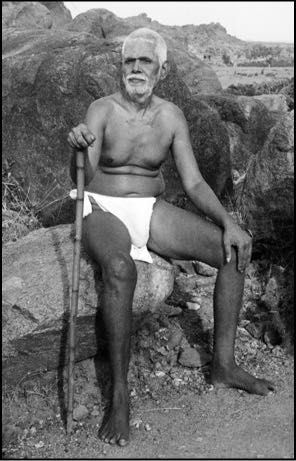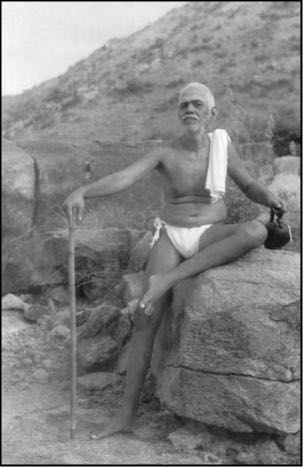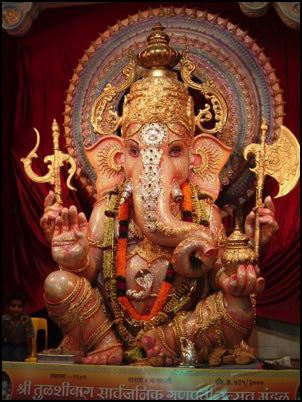



Spiritual-Teaching.org
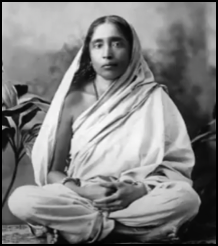
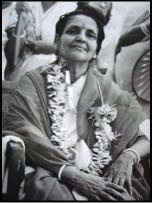
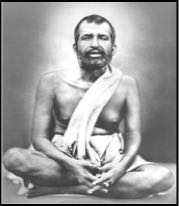
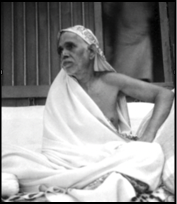
“All things are possible to him who believes, they are less difficult to him who hopes, they are easier to him who loves,
and still more easy to him who practices and perseveres in these three virtues...
Believe me, count as lost each day you have not used in loving God.” Brother Lawrence
Letter # 16 - How to Pray
There are countless ways to pray. One could argue that each act of
prayer is unique to the person who performs it. The various orthodox
religious traditions provide specific techniques appropriate to a whole
range of individual capacities and needs. As to what we should choose,
-- like imperturbable but irresistible water that trickles down to the lowest
point, 1-- we do find with gentle persistence that course of action which is
suited to us. Life has the propensity to reveal to us what is suitable for
our well-being. It is a question of catching the moment when a hint is
offered, often out of seemingly nowhere, as to what one should do. From
the depths of our unconscious, circumstances are created that answer
our dilemma. We must be alert enough to catch them.
The recognition that there must be something better is the first
requirement if one wants prayer to be effective. When I first came to
Arunachala, I did not know what to do or say. The startling newness of
the environment paralysed my sense of initiative in the face of the flood
of new impressions. I knew there was something special here, but I did
not know where to start — time seemed to stand still. I was bewildered
and bored in consecutive measure. As if an old skin was being shed and
a new unfamiliar layer was revealed, and though it felt uncomfortable it
was so close to my sense of awareness that I slowly began to identify
with it. This was the beginning of a new kind of prayer, a silent one that
enveloped me in a cloud of unknowing. Prayer is an attitude of mind as
much as an action.
There is the pronouncement in the New Testament: “Ask, and it will
be given to you; seek, and you will find; knock, and it will be opened to
you. knock and the door shall open.” 2
The crux of this admonition is how sincere is the seeking and how
determined is one to knock on what seems to be an impenetrable door.
There is the familiar story of the drowning man as related by
Ramakrishna Paramahamsa.
“You know that story of the man who asked his guru how God
could be realized. The guru said to him: “Come with me. I shall show you
how one can realize God.” Saying this, he took the disciple to a lake and
held his head under the water. After a short time, he released the
disciple and asked him, “How did you feel?” “I was dying for a breath of
air!” said the disciple.
When the soul longs and yearns for God like that, then you will
know that you do not have long to wait for His vision. The rosy colour on
the eastern horizon shows that the sun will soon rise.” 3
Prayer is a primary means to realise that vision, a bridge to aid us.
Prayer consists of two aspects. Remembrance and surrender.
Surrender is a difficult concept for many. Another way to express it would
be dependency and this understanding occurs when we finally realise
that all our efforts to understand and control our lives with our limited
perspective will fail. This is anathema to the modern concept that we all
are unique. Yes, we all are exceptional but then again everyone else is
also inimitable. We are all special in our own way but not at the expense
of another person’s distinctiveness.
When we begin to see the pointlessness of the habitual jockeying
in which we engage by pretending we are better than others to bolster
our own perceived self-worth, we shift our standard of judgement from
the relative and provisional to a higher level. So what if someone else is
stronger, taller, happier, more beautiful, wealthier? Does it matter right at
this moment as we live and breathe? We have the gift of life which is
more than sufficient. It is a blessed state in which gratitude is a natural,
consequent response. Gratitude is also a prayer. It reminds one of St
Francis of Assisi and his song The Canticle of the Sun.
Most high, all-powerful, all good Lord! All praise is yours, all glory,
all honour, and all blessing. To you, alone, Most High, do they
belong. No mortal lips are worthy to pronounce your name.
Be praised, my Lord, through all your creatures, especially through
my lord Brother Sun, who brings the day; and you give light through
him. And he is beautiful and radiant in all his splendour! Of you,
Most High, he bears the likeness.
Be praised, my Lord, through Sister Moon and the stars; in the
heavens you have made them, precious and beautiful……….
A contrary posture to this glorious attitude of gratitude is contrition.
It is just as effective. It is the story of the glass which is half full, or half
empty. It depends on one’s natural propensities.
An example of atonement is the Jesus Prayer “Lord Jesus Christ,
Son of God, have mercy on me, a sinner,” which is predominately used by
members of the Greek and Russian Orthodox churches. This prayer said
over and over again creates a state in the speaker in which their sense of
self-importance is steadily diminished to the point where they have no will
of their own but are open each moment to what happens around them, both
externally as well as internally. Prayer in this way is meant to destroy the
sense of separateness and arrogance, that perennial pest which clouds our
sense of discernment. This bhava or attitude originally arose through the
Psalms in Judaism and later, the Gospels and was taken up by the Desert
Fathers in Egypt, Syria, Iraq and later Greece.
In Hinduism and Buddhism, there are prayers composed by gurus,
saints and sages requesting wisdom, compassion and peace of mind. Even
in the purest school of Vedanta, Advaita, teachers would initiate sishyas
(disciples) into a mantra to aid them in purifying their mind. For example, in
recent times Sri Nisargadatta Maharaj who belonged to the Navnath
Sampradaya.
A mantra is a string of sounds that are meant deliberately to affect
the mind and create a certain condition that aids the person saying the
mantra. There are mantras for all occasions. For a person who follows the
predominant south Indian Saivite tradition, that is, worship of Lord Siva, a
normal mantra that is given would be Om Namo Sivaya. One does not
need a guru to check on the internet for the right pronunciation. It may not
contain the imprimatur of a guru's blessing but it is a start.
Sri Ramana was also a Saivite and was known to give a phrase if
persistently requested and considered that it would be of help to the
supplicant. It is not just the word or phrase or prayer which is important, the
grace of the guru who gives it is crucial. It is recorded that he gave the
expression ‘Siva, Siva’. Sri Ramana also gave a single word such as iru
(be) or summa iru (just be; at peace; quiet). There is a whole literature in
Tamil spirituality connected to this latter phrase which signifies the highest
state of consciousness which one can attain.
For those who follow the teachings of Sri Ramana the most important
general prayer he gave us was Sri Arunachala Akshara Mana Malai (The
Marital Garland of Letters). It is an appeal in 108 verses imploring the
sacred hill Arunachala to grant not just solace but liberation from samsara.
It is a hymn of love demonstrating the travails and union of the soul with
God in the form of Arunachala. It was written spontaneously by Sri Ramana
one day as he circumambulated the sacred hill. The verses poured out of
him in a stream of ecstasy. There are several translations of the Tamil
hymn which give some idea of its beauty and profundity. 4
The Marital Garland of Letters grew on me over the years. At first, I
did not understand but eventually, its profound meaning made an impact
particularly when with the passing years a growing sensitivity to the
palpable, physical majesty of Arunachala started to pervade my
consciousness. From just an ordinary pile of rocks, it assumed epic
proportions. It was as if one was breathing a different type of air that
stimulated a sense of wonder.
Returning to the general and practical theme of this letter about
how to pray. In verse six of Upadesa Saram (The Essence of Instruction)
Sri Ramana states:
Rather than praising [God by singing hymns], [japa or repetition
of his name is beneficial]; [rather than japa done in] a loud
voice, [japa whispered faintly within the mouth is beneficial];
[and] rather than japa within the mouth, that which is done by
mind is beneficial. This [mental repetition or manasika japa] is
called dhyana [meditation]. 5
The simple mechanics of this verse are self-evident. From praise to
japa, a mantra, to dhyana, silent meditation. It requires sustained effort,
coupled with a determination to repeat again and again a mantra or a
word. One aspect of the mind which works in one’s favour is the ability of
the mind to repeat indefinitely if asked, a phrase, or a snatch of a song.
Quite often we do it unintentionally as the subconscious mind tries to tell
us something important of which we are not aware. Intentional japa or
repetition can lead us to pure meditation unembroidered by thought.
A prayer or a mantra can repeat itself automatically once we are
determined that it should. It is as simple as that though the actual
success depends on the intensity and sincerity of our determination. In
Hindu philosophy, this is called a sankalpa.
The word sankalpa comes from the Sanskrit root kirp meaning ‘to
come into existence’ and sam, meaning ‘completely’.
A conscious, continuous mantra or prayer is like the arms of a
clock. Once the mechanism is activated, the arms go round and round
until they run out of energy. In the same way, the instrument of prayer
depends on how much energy we are prepared to give it. The miracle of
prayer or a mantra is that if there is sufficient resolve, it will soon
independently repeat itself, till it becomes natural like breathing. At the
time when I practised a mantra, I was astonished by a mantra’s capacity
to repeat itself independently of my will.
The mind is a machine and how we program it depends on our
awareness. Think of a boat sailing on the ocean. The horizon is vast and
the landmarks are almost nil. The future days of our life are the same;
they are aspects of a journey about which we have little or no
cognizance. How do we navigate this challenge? All we have to direct
our boat impelled by the winds of change is a rudder. This is our facility
of awareness.
Prayer acts as an anodyne and by its use of repetitiveness
neutralises the static of capricious thoughts which beset us. It
consequently releases hidden energies within us which encourage our
ability to discriminate between the real and the unreal.
When we arrive at that calm state, the flow of thoughts diminishes.
Since every thought is understood by an appropriate word or words, any
exercise in stilling the mind implies the withdrawal from thoughts and
words and their capacity to influence our equanimity.
This allows our consciousness to settle into its natural state. We
normally fail to see it because we are busy being fascinated by the
mind’s relentless and automatic activities. Instead of being bombarded
with erratic impulses, an emptiness is created, and out of the depths of
ever-present, so-called nothingness comes illumination.
Prayer is a fulcrum that allows us to see.
_______________________________________________________
1 Tao Te Ching. Chapter Eight. “The highest good is like water.
Water gives life to the ten thousand things and does not strive.
It flows in places men reject and so is like the Tao.”
Translated by Gia-Fu Feng and Jane English.
2 Mathew 7:7.
3 Gospel of Sri Ramakrishna by ‘M’. Translated by Swami Nikhilananda.
Chapter 49, p.937.
4 See Arunachala Aksharamanamalai, A Detailed Commentary by
Muhavai Kanna Muruganar, translated by Robert Butler.
Published by Sri Ramanasramam, Tiruvannamalai.
5 Upadesa Saram (The Essence of Spiritual Instruction)
(in Tamil, Sanskrit, Telugu and Malayalam)
with Transliteration, Word-for-Word Meaning, Paraphrase and Commentary.
Published by Sri Ramanasramam.
